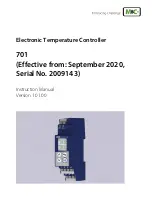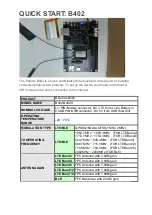
8-24
L90 LINE CURRENT DIFFERENTIAL SYSTEM – INSTRUCTION MANUAL
LINES WITH TAPPED TRANSFORMERS
CHAPTER 8: APPLICATION OF SETTINGS
8
where
I_L_A = “local” current phase A
I_R_A = “remote” current phase A
I_L_0 = local zero-sequence current
I_R_0 = remote zero-sequence current
I
2
op_A = operating (differential) squared current phase A
The restraint current is calculated in a similar way.
8.7.2 Transformer load currents
As the tapped line can be energized from one terminal only, or there can be a low current flowing through the line, the
slope setting of the differential characteristic does not guarantee stability of the relay on transformer load currents.
Consequently, a pickup setting must be increased accordingly in order to prevent maloperation. The L90 forms its restraint
current in a unique way. Unlike traditional approaches, the effects of slope and pickup settings are combined: the higher
the slope, the lower the pickup setting required for the same restraining effect.
Assuming the line is energized from one terminal and the current is below the lower break-point of the characteristic,
consider using the following stability conditions in order to select the pickup (P) and slope (S
1
) settings, where I
LOAD
is a
maximum total load current of the tapped transformer(s).
The calculations need to take into account the requirement for the pickup setting resulting from line charging currents.
Certainly, a security factor must be applied to the above stability conditions. Alternatively, distance supervision can be
considered to prevent maloperation due to transformer load currents.
8.7.3 LV-side faults
Use Distance Supervision to prevent maloperation of the L90 protection system during faults on the LV-side of the
transformer(s). As explained earlier, set the distance elements to overreach all line terminals, and at the same time safely
underreach the LV busbars of all the tapped transformers. This can present some challenges, particularly for long lines and
large transformers tapped close to the substations. If the L90 system retrofits distance relays, there is a good chance that
one can set the distance elements to satisfy the imposed. If more than one transformer is tapped, particularly on parallel
lines, and the LV sides are interconnected, detailed short circuit studies can be needed to determine the distance settings.
8.7.4 External ground faults
External ground faults behind the line terminals are seen by the overreaching distance elements. At the same time, the
tapped transformer(s), if connected in a grounded wye, feed the zero-sequence current. This current is going to be seen at
one L90 terminal only, causes a spurious differential signal, and consequently, can cause maloperation.
When the
ZERO-SEQ CURRENT REMOVAL
feature is enabled, the modified (I_0 removed) differential current in all three
phases is shown in the
ACTUAL VALUES
METERING
87L DIFFERENTIAL CURRENT
menu. Local and remote currents
values are not changed.
Two-terminal applications:
Three-terminal applications:
















































